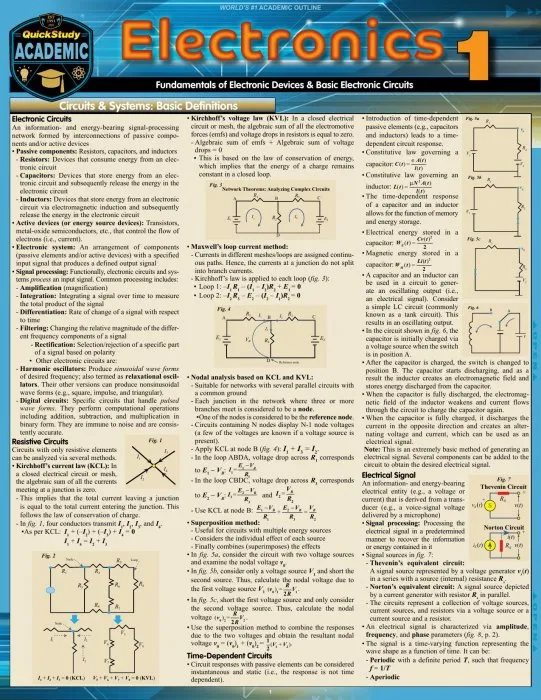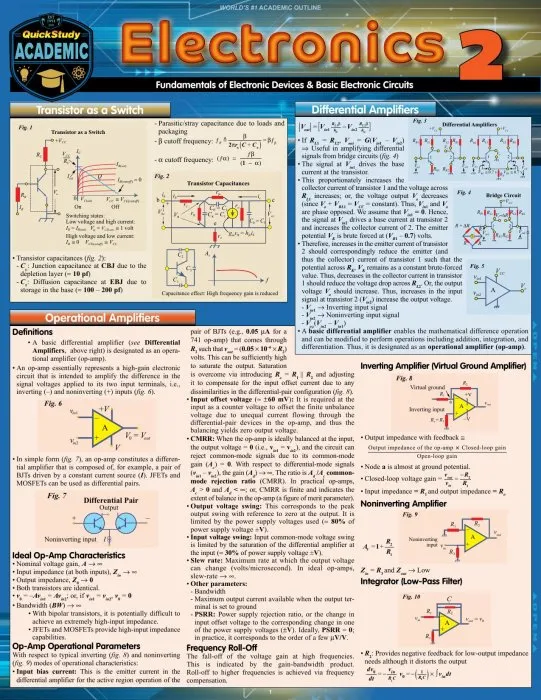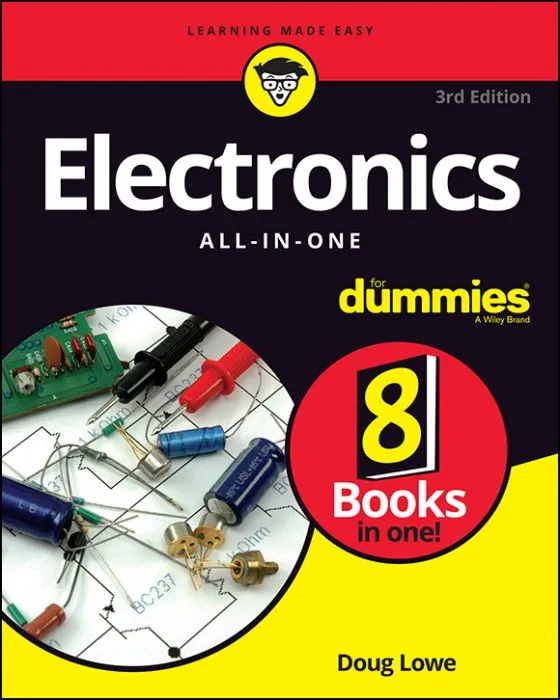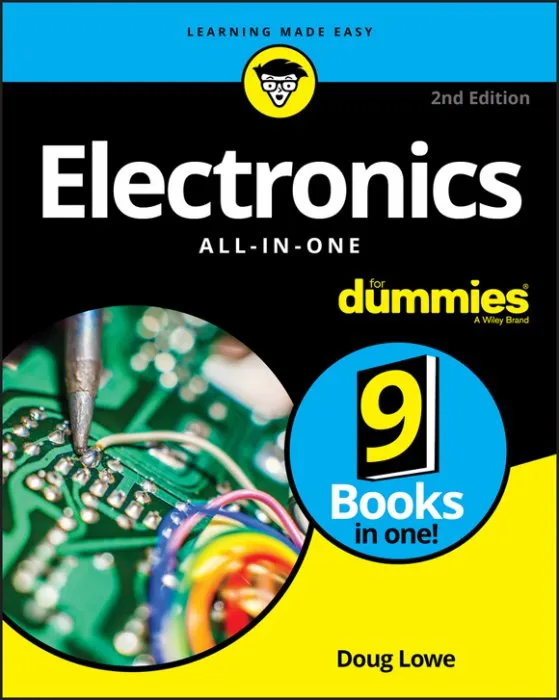Electronics 1 (QuickStudy Academic), 2nd Edition

Date: May 1st, 2019
ISBN: 9781423242239
Language: English
Number of pages: 6 pages
Format: True PDF
Add favorites
Engineers build the foundation for solid and secure systems that we all use every day. The number of facts needed for those calculations is staggering and just one mistake can wreak havoc. This must-have reference to the core fundamentals of electronics is perfect for any student or professional. Concisely written so you can have more answers in 6 digital pages than you would find in 100 pages of a book.
Ready at your fingertips for studying and boosting grades, or for career projects in the working world providing one more verification of facts that can ensure a solid build. Concepts covered are taught in electronic circuit courses for engineers where key facts learned need to be referenced throughout engineering school and a career. With the number of facts covered and the durability to last a lifetime, there is also no better value. To complete the set, get Electronics 1 & Electronics 2 for even more well-rounded coverage.
6 page digital guide covers:
• Circuits & Systems: Definitions
• Electronic Circuits
• Resistive Circuits
• Time Dependent Circuits
• Electrical Signal
• Signal Distortion
• Noise
• Circuit Devices
• Diodes: Ideal & Practical Versions
• Diodes as Circuit Elements
• Semiconductor Diodes
• Intrinsic & Extrinsic Semiconductors
• PN Junction
• Junction Diodes
• Biasing a Semiconductor Diode
• Rectifier Circuits
• Half-Wave Rectifier, & with a Capacitor Filter
• Full-Wave Rectifier with a Center-Tapped Transformer
• Full-Wave Bridge Rectifier
• Voltage Regulation, Zener Regulators
• Diode Clipping Circuits, Voltage Clamps, Envelope Detector
• Bipolar Junction Transistors (BJTs)
• Unbiased BJT & Biased BJT
• Equivalent Circuit of a BJT
• BJT Modes of Operation & BJT Characteristics
• Analytical Relations of BJT Characteristics
• Single-Battery Biasing: CE configurations
• Calculation of Biasing Resistor Values
• Operating Point (Q-Point) Calculation
• Voltage-Divider Bias
• Maximum Dynamic Swing of the Signal
• Biasing for Q-Point Stability
• H-Parameter & Hybrid: pi Parameter Models of BJTs
• Hybrid-pi model: CE Configuration
• Common Emitter (CE) Amplifier
• Common Base (CB) Amplifier
• Common Collector (CC) Amplifier
• Comparison of the Parameters of CB,
• CE & CC Amplifiers
Ready at your fingertips for studying and boosting grades, or for career projects in the working world providing one more verification of facts that can ensure a solid build. Concepts covered are taught in electronic circuit courses for engineers where key facts learned need to be referenced throughout engineering school and a career. With the number of facts covered and the durability to last a lifetime, there is also no better value. To complete the set, get Electronics 1 & Electronics 2 for even more well-rounded coverage.
6 page digital guide covers:
• Circuits & Systems: Definitions
• Electronic Circuits
• Resistive Circuits
• Time Dependent Circuits
• Electrical Signal
• Signal Distortion
• Noise
• Circuit Devices
• Diodes: Ideal & Practical Versions
• Diodes as Circuit Elements
• Semiconductor Diodes
• Intrinsic & Extrinsic Semiconductors
• PN Junction
• Junction Diodes
• Biasing a Semiconductor Diode
• Rectifier Circuits
• Half-Wave Rectifier, & with a Capacitor Filter
• Full-Wave Rectifier with a Center-Tapped Transformer
• Full-Wave Bridge Rectifier
• Voltage Regulation, Zener Regulators
• Diode Clipping Circuits, Voltage Clamps, Envelope Detector
• Bipolar Junction Transistors (BJTs)
• Unbiased BJT & Biased BJT
• Equivalent Circuit of a BJT
• BJT Modes of Operation & BJT Characteristics
• Analytical Relations of BJT Characteristics
• Single-Battery Biasing: CE configurations
• Calculation of Biasing Resistor Values
• Operating Point (Q-Point) Calculation
• Voltage-Divider Bias
• Maximum Dynamic Swing of the Signal
• Biasing for Q-Point Stability
• H-Parameter & Hybrid: pi Parameter Models of BJTs
• Hybrid-pi model: CE Configuration
• Common Emitter (CE) Amplifier
• Common Base (CB) Amplifier
• Common Collector (CC) Amplifier
• Comparison of the Parameters of CB,
• CE & CC Amplifiers
Download Electronics 1 (QuickStudy Academic), 2nd Edition
Similar books
Information
Users of Guests are not allowed to comment this publication.
Users of Guests are not allowed to comment this publication.




